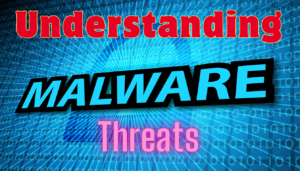Introduction
A zero-day attack refers to the exploitation of recently discovered security vulnerabilities in software, hardware, or firmware. These vulnerabilities, known as zero-day vulnerabilities, have not yet been addressed or patched by the vendor or developer, giving hackers an advantage. Zero-day attacks can result in security breaches, the spread of malware, and the theft of sensitive data. It is crucial to understand the risks associated with zero-day attacks and implement effective prevention and mitigation strategies to protect your systems.
Points to Note:
- Zero-day attacks involve exploiting newly discovered vulnerabilities in software, hardware, or firmware.
- These vulnerabilities have not yet been patched by the vendor or developer, giving hackers an advantage.
- Zero-day attacks can lead to security breaches, malware spread, and data theft.
- Effective prevention and mitigation strategies are essential for safeguarding against zero-day attacks.
- Key measures include keeping software up to date, using security solutions, implementing patch management processes, and having an incident response plan.
Table of Contents
History and Development
| Year | Milestone | Description |
|---|---|---|
| 1990s | Early Instances | The concept of zero-day vulnerabilities becomes known as internet connectivity increases, initially more for demonstrating skills than for malicious gain. |
| 2000s | Rise of Commercialization | Organized groups and state-sponsored hackers begin exploiting zero-day vulnerabilities for financial and strategic gain, creating a market for these exploits. |
| 2010 | Stuxnet Worm | The Stuxnet worm uses multiple zero-day exploits to target Iran’s nuclear facilities, highlighting the potential of zero-day attacks to impact national security. |
| 2016 | The Shadow Brokers Leak | The Shadow Brokers leak NSA’s hacking tools, including several zero-day exploits, significantly impacting cybersecurity practices and policies worldwide. |
| 2017 | WannaCry and NotPetya Attacks | Zero-day exploits from the Shadow Brokers’ leak are used in the WannaCry and NotPetya ransomware attacks, causing widespread disruption and showcasing the destructive power of zero-day vulnerabilities. |
| 2020s | Enhanced Defenses and Continued Challenges | The cybersecurity community responds with more robust software testing, bug bounty programs, and rapid vulnerability disclosure processes, though the market for zero-day exploits remains active. |
What is a Zero-Day Attack?
A zero-day attack occurs when hackers exploit a zero-day vulnerability, which is a software vulnerability that is unknown to vendors or developers. This means that there is no patch or fix available, making attacks more likely to succeed. The attackers use exploit code, which is a method to attack systems with previously unidentified vulnerabilities. By infiltrating a system affected by a zero-day vulnerability, hackers can cause damage or steal valuable data. Zero-day attacks are particularly dangerous as they can go undetected until they are leveraged, giving the attackers the element of surprise.

How Zero-Day Attacks Work
Zero-day attacks take advantage of security vulnerabilities in software to infiltrate systems and gain unauthorized access to sensitive data. Hackers exploit these vulnerabilities before developers can release patches, giving them the upper hand in carrying out their cyberattacks. Understanding how zero-day attacks work is crucial for implementing effective prevention measures.
Socially Engineered Emails and Exploit Code
Hackers often use socially engineered emails to trick users into performing actions that compromise their systems. These emails may contain persuasive content or urgent requests that entice users to click on malicious links or download infected attachments. Once the user interacts with the email, malware is installed on their system, providing hackers with a backdoor to access their files and data.
Unpatched Zero-Day Vulnerabilities
Zero-day vulnerabilities are often unknown to software vendors and developers until they are discovered and exploited by hackers. These vulnerabilities present a significant risk because there is no patch available to fix them. This means that even when software vulnerabilities are eventually discovered and patches are released, not all users implement them in a timely manner, leaving their systems susceptible to zero-day attacks.
Zero-day attacks can have devastating consequences, resulting in data breaches, loss of crucial information, and financial damage. It is essential for individuals and organizations to stay vigilant, keep their software up to date, and educate themselves on safe online practices to mitigate the risks associated with zero-day attacks.
Who Carries Out Zero-Day Attacks?

Zero-day attacks are orchestrated by various malicious actors, including cybercriminals, hacktivists, those involved in corporate espionage, and entities engaged in cyberwarfare. Each of these actors has distinct motivations and objectives when carrying out these attacks.
Cybercriminals are typically driven by financial gain and target vulnerable systems with the intention of exploiting them for monetary purposes. They seek to exploit zero-day vulnerabilities in software or hardware to breach the security of organizations and individuals.
Hacktivists, on the other hand, employ zero-day attacks as a means to advocate for political or social causes and draw attention to their agenda. These individuals or groups aim to disrupt the operations of their targeted entities and raise awareness about specific issues through their actions.
Comparing the Motivations of Malicious Actors in Zero-Day Attacks
| Malicious Actor | Motivations |
|---|---|
| Cybercriminals | Financial gain through exploiting vulnerabilities |
| Hacktivists | Advocacy for political or social causes |
| Corporate Espionage | Gathering valuable information for competitive advantage |
| Cyberwarfare | Espionage or attacks on other countries’ digital infrastructure |
Targets of Zero-Day Exploits
Zero-day exploits pose a significant threat to a wide range of systems, targeting various components such as operating systems, web browsers, office applications, open-source software, hardware, firmware, and Internet of Things (IoT) devices. These vulnerabilities make individuals, businesses, government agencies, and even political targets susceptible to potential attacks. The victims of zero-day exploits can fall into two categories: targeted and non-targeted.
Targeted attacks are focused on high-value entities:
Individuals
Everyday users who may unknowingly be using vulnerable systems or applications.
Businesses
Organizations of all sizes that rely on various software, hardware, and online services.
Government Agencies
Federal, state, and local government institutions that handle sensitive information and provide critical services.
Political Targets
High-profile individuals, activists, or political organizations that may become victims of targeted attacks.
How to Identify Zero-Day Attacks
Identifying zero-day attacks can be challenging due to the unique nature of these vulnerabilities. Existing databases of malware and their behavior can serve as a reference point for detection, but their effectiveness is limited since zero-day exploits are unknown and new. Another method involves analyzing the behavior of incoming files and interactions with existing software to detect zero-day malware characteristics. Machine learning techniques can also be employed, using recorded data to establish a baseline for safe system behavior. A combination of different detection systems, including hybrid solutions, is often used to identify zero-day attacks more effectively.
Examples of Zero-Day Attacks
Zero-day attacks have become increasingly prevalent in recent years, targeting various systems and industries. Here are some notable examples of zero-day attacks:
Chrome Zero-Day Vulnerability (2021)
In 2021, a zero-day vulnerability was discovered in the popular web browser, Chrome. This vulnerability allowed hackers to exploit the browser and potentially gain unauthorized access to users’ systems. The exploit prompted immediate action from the Chrome development team to release a patch and address the vulnerability.
Zoom Vulnerability (2020)

In 2020, a zero-day vulnerability was identified in the video conferencing platform, Zoom. This vulnerability allowed attackers to remotely access users’ PCs, potentially compromising sensitive information. The Zoom team quickly responded by releasing a security update to mitigate the risk and protect users.
Apple iOS Vulnerability (2020)
During 2020, zero-day vulnerabilities were discovered in Apple’s iOS operating system. These vulnerabilities could potentially allow attackers to bypass security measures and gain unauthorized access to iOS devices. Apple promptly released patches and updates to address these vulnerabilities and enhance the security of its users’ devices.
Microsoft Windows Eastern Europe Attack (2019)
In 2019, a targeted zero-day attack was carried out against Microsoft Windows systems in Eastern Europe. The attackers exploited a vulnerability that allowed them to gain unauthorized access to systems and potentially steal sensitive information. Microsoft responded by releasing patches and security updates to address the vulnerability and protect affected systems.
Microsoft Word Attack
Another notable zero-day attack involved Microsoft Word, a widely used office application. The attackers leveraged a vulnerability in Word to compromise personal bank accounts and gain unauthorized access to financial information. Microsoft quickly released a security update and urged users to apply the patch to prevent further exploitation of the vulnerability.
Stuxnet
One of the most infamous zero-day attacks in recent history is Stuxnet. This highly sophisticated malware targeted Iran’s nuclear program and exploited multiple zero-day vulnerabilities across various systems. Stuxnet successfully disrupted Iran’s nuclear operations, showcasing the potential impact and damage that can result from zero-day attacks.
| Zero-Day Attack | Year | Target |
|---|---|---|
| Chrome zero-day vulnerability | 2021 | Web browser |
| Zoom vulnerability | 2020 | Video conferencing platform |
| Apple iOS vulnerability | 2020 | iOS operating system |
| Microsoft Windows Eastern Europe attack | 2019 | Microsoft Windows systems |
| Microsoft Word attack | N/A | Office application |
| Stuxnet | N/A | Iran’s nuclear program |
How to Protect Against Zero-Day Attacks
Effective protection against zero-day attacks involves implementing various preventive measures.
| Preventive Measures | Description |
|---|---|
| Keep software updates | Regularly update software and operating systems with the latest patches to address known vulnerabilities. |
| Use essential applications | Minimize vulnerabilities by using only necessary applications, reducing the potential attack surface. |
| Implement a firewall | Set up a firewall to protect your network from unauthorized access and monitor incoming and outgoing traffic. |
| Educate users | Provide training and awareness programs to educate users about safe online practices, promoting strong passwords, and avoiding suspicious links or attachments. |
By implementing these preventive measures, both individuals and organizations can enhance their resilience against zero-day attacks and improve their overall cybersecurity posture.
Zero-Day Protection Measures
To protect your organization against zero-day attacks, it is essential to implement various tools and technologies that enhance your cybersecurity defenses. Key measures include:
Windows Defender Exploit Guard
Windows Defender Exploit Guard is a powerful tool that provides attack surface reduction and network protection. By implementing this solution, you can effectively mitigate the risk of zero-day vulnerabilities targeting your systems.
Next-Generation Antivirus (NGAV)
Next-Generation Antivirus (NGAV) solutions utilize advanced threat intelligence, behavioral analytics, and machine learning to detect and defend against unknown malware, including zero-day threats. These cutting-edge solutions are designed to provide proactive protection for your organization.

Patch Management
Implementing a robust patch management process is crucial for addressing software vulnerabilities promptly. Regularly updating your system with the latest patches and security updates minimizes the risk of exploit by zero-day attacks.
Incident Response Plan
In the event of a zero-day attack, having an incident response plan in place is essential. This comprehensive plan outlines the actions to be taken, identifies key stakeholders, and provides a structured approach to contain and mitigate the impact of the attack.
By leveraging the Windows Defender Exploit Guard, deploying Next-Generation Antivirus (NGAV) solutions, implementing effective patch management, and having a well-defined incident response plan, you can significantly enhance your organization’s ability to protect against zero-day attacks.
Take the necessary steps to safeguard your systems, data, and reputation from the ever-evolving threat landscape.
Artificial Intelligence (AI) In Zero Day Attack
Artificial Intelligence (AI) is increasingly becoming a pivotal tool in cybersecurity, particularly in the detection and prevention of zero-day attacks. Zero-day attacks exploit unknown vulnerabilities for which there is no available patch, making them particularly challenging to detect using traditional security measures. Here’s how AI is being utilized to combat these elusive threats:

Predictive Analysis
AI systems are trained on vast datasets to identify patterns and anomalies that might suggest the presence of a zero-day exploit. By analyzing previous attacks and understanding normal network behaviors, AI can predict potential vulnerabilities and zero-day exploits even before they are identified by security teams. This predictive capability allows organizations to strengthen their defenses proactively.
Behavioral Analytics
AI excels in recognizing deviations from normal behavior patterns within software applications or network traffic. This behavioral analytics approach is crucial for identifying zero-day threats that do not match any known malware signatures. AI algorithms continuously learn and adapt, improving their ability to detect new and evolving threats based on subtle indications of malicious activity.
Automated Response
Upon detecting a potential zero-day attack, AI can also automate immediate response actions, such as isolating affected systems or blocking suspicious network traffic. This rapid response capability is essential to prevent the spread of an attack within an organization, minimizing damage before human intervention.
Vulnerability Management
AI can assist in vulnerability management by scanning software and systems for weaknesses that could potentially be exploited in zero-day attacks. By automatically analyzing code and system configurations, AI helps prioritize vulnerabilities that need urgent attention based on their risk level and the likelihood of exploitation.
Enhancing Existing Security Systems
AI enhances traditional security systems by integrating its predictive and learning capabilities. It enhances intrusion detection systems (IDS), firewalls, and antivirus software, making them smarter and more adaptive to new threats. This integration is critical for evolving cybersecurity defenses to keep pace with sophisticated cyber threats, including zero-day exploits.
Conclusion
Zero-day attacks pose significant risks to individuals and organizations, as they exploit vulnerabilities that have not yet been addressed by software vendors. These attacks can result in security breaches, the spread of malware, and the theft of sensitive data. It is crucial to understand the nature of zero-day vulnerabilities and implement effective prevention and protection strategies to mitigate their impact and safeguard against potential attacks.
Prevention is key when it comes to defending against zero-day attacks. Keeping your software and operating systems up to date with the latest patches is essential. Additionally, using advanced security solutions like Next-Generation Antivirus (NGAV) can help detect unknown malware and protect against zero-day threats.
Implementing a robust patch management process is another important measure. This ensures that software vulnerabilities are addressed promptly, reducing the window of opportunity for attackers. Furthermore, having a well-defined incident response plan in place allows organizations to respond effectively to zero-day attacks and minimize their impact.
The use of AI in combating zero-day attacks represents a significant advancement in cybersecurity. With its ability to analyze large volumes of data, recognize patterns, and respond quickly, AI is on the front lines of defending against the unpredictable nature of zero-day exploits.
FAQ
What is a zero-day attack?
Refers to a cyberattack that occurs on the same day a vulnerability is discovered in software, before the software developer has an opportunity to create a patch to fix the vulnerability.
Why are zero-day attacks so dangerous?
These attacks are particularly dangerous because they exploit unknown vulnerabilities, meaning that until the flaw is discovered and patched, all users of the vulnerable software are at risk. There is no known defense against an unpatched vulnerability.
How are zero-day vulnerabilities found?
Vulnerabilities can be discovered by attackers through extensive testing and scanning of software and systems for flaws. Researchers, both ethical and malicious, use sophisticated tools to analyze software codes and network traffic to identify potential vulnerabilities.
What can be done to protect against zero-day attacks?
Protecting against attacks involves implementing a layered security approach, including up-to-date threat intelligence, using advanced security technologies like behavior-based detection systems, regular software updates, rigorous security assessments, and educating users on secure practices.
Who is most at risk from zero-day attacks?
Any individual or organization using software or hardware that contains an unknown vulnerability is at risk. However, large organizations, government entities, and companies with valuable data are often the most targeted.
How do attackers exploit zero-day vulnerabilities?
Attackers exploit vulnerabilities by writing code to target the vulnerability, then either executing the attack directly or embedding malicious software in seemingly benign applications or websites to spread the exploit.
Can antivirus software detect zero-day attacks?
Traditional antivirus software may not always detect zero-day attacks since it relies on known threat signatures. However, more advanced solutions incorporate behavioral detection and machine learning algorithms that can identify unusual activity that may indicate a zero-day exploit.



